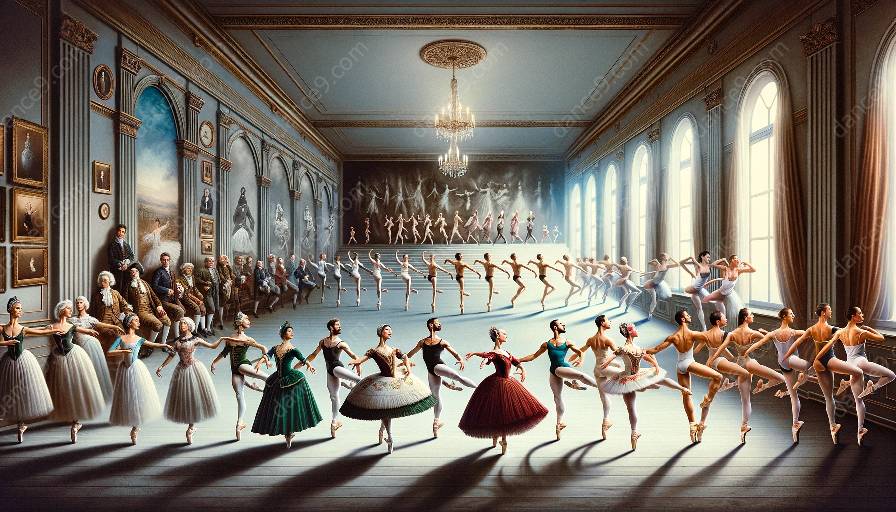Ballet, with its rich history and technical evolution, is an art form deeply intertwined with gender representation. From the early development of ballet techniques to contemporary interpretations, the influence of gender roles has been a significant factor in shaping the art form.
The Evolution of Ballet Techniques
The evolution of ballet techniques has been influenced by societal norms and expectations related to gender. In the early years of ballet, male and female dancers were often segregated in terms of the roles they played. Male dancers focused on strength and athleticism, showcasing powerful jumps and turns, while female dancers were expected to embody grace and fluidity. These gender-specific expectations influenced the development of ballet techniques, with choreographers and instructors tailoring movements to align with prevailing gender roles.
As ballet continued to evolve, the traditional gender distinctions in dance began to blur. Modern ballet techniques emphasized a more inclusive approach, allowing dancers of all genders to explore a wider range of movements and expressions. This shift in perspective not only expanded the artistic possibilities within ballet but also challenged the historical gender constraints that had shaped the art form for centuries.
Ballet History and Theory
Examining the history and theory of ballet reveals the intricate relationship between gender and dance. Ballet has long been a reflection of societal norms, with gender dynamics playing a crucial role in shaping the art form. From the courtly traditions of the Renaissance to the groundbreaking works of 20th-century choreographers, ballet history is replete with examples of how gender representation has influenced the development of techniques and styles.
Furthermore, ballet theory offers insights into the cultural context surrounding gender in dance. Theoretical frameworks have been instrumental in deconstructing gender stereotypes within ballet, fostering discussions on inclusivity and equality. By delving into the theoretical underpinnings of ballet, scholars and practitioners have sought to challenge traditional notions of gender representation, paving the way for more diverse and equitable expressions of dance.
Challenging Gender Representation in Ballet Techniques
Today, the conversation around gender representation in ballet techniques continues to evolve. Dancers and choreographers are redefining traditional gender roles, exploring new movements and choreographic approaches that transcend established conventions. By challenging gender representation in ballet, the art form is undergoing a transformation, opening up avenues for greater diversity and artistic innovation.
In conclusion, the exploration of gender representation in ballet techniques illuminates the complex interplay between history, theory, and the evolution of dance. By recognizing and addressing the impact of gender on ballet, the art form can continue to break new ground, fostering a more inclusive and dynamic dance culture.





























